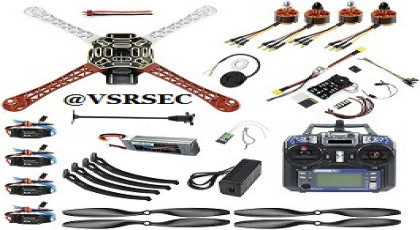JavaScript Fundamentals: From Zero to Hero
Branch : CSE






The Quadcopter Skill Development Course offers hands-on training in the design, construction, programming, and operation of drones (quadcopters). This course introduces learners to UAV (Unmanned Aerial Vehicle) technology, combining mechanical design, electronics, and programming to build functional flying machines.
Participants will explore drone components, flight dynamics, wireless control systems, and safety regulations. The course is ideal for students, hobbyists, and aspiring drone technicians looking to enter the growing field of UAV applications in agriculture, surveillance, delivery, cinematography, and more.
Introduction to UAVs and Drone Technology
Anatomy of a Quadcopter: Frame, Motors, ESCs, Propellers, etc.
Working with Flight Controllers (e.g., KK2, APM, or Pixhawk)
Radio Communication and Remote Control Systems
Battery Management and Power Distribution
Assembling and Calibrating a Quadcopter
Basics of Drone Programming & Flight Tuning
Troubleshooting and Maintenance
Drone Safety Guidelines and DGCA (India) / FAA (U.S.) Regulations
Applications of Drones in Different Industries


CO1: Understand the fundamental principles of flight dynamics, aerodynamics, and the working mechanisms of quadcopters.
CO2: Identify and describe the function of various components of a quadcopter including frame, motors, ESCs, flight controller, sensors, and propellers.
CO3: Design and assemble a quadcopter system using standard components and demonstrate safe assembly practices.
CO4: Program and configure flight controllers (such as Arduino, Pixhawk, or KK2) for stable flight and desired flight modes using suitable software platforms.
CO5: Demonstrate basic autonomous flight capabilities using onboard sensors and GPS modules.
CO6: Analyze and troubleshoot issues related to quadcopter stability, control, communication, and performance.
CO7: Apply PID control theory and sensor fusion algorithms (e.g., IMU data processing) to improve flight performance and control accuracy.
CO8: Evaluate real-world applications of quadcopters in fields such as surveillance, agriculture, delivery, and aerial mapping.
0 Reviews
Review Course
For Review on Course. You need to Login first. Login Here